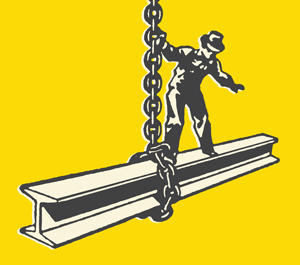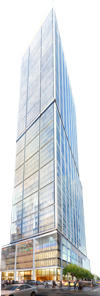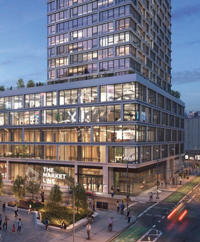 To hire union or to go open shop, that is the question — at least for many developers. While that has long been a loaded question, it’s never been more fraught with political ramifications and controversy than it is now.
To hire union or to go open shop, that is the question — at least for many developers. While that has long been a loaded question, it’s never been more fraught with political ramifications and controversy than it is now.
With razor-thin margins in a market marked by softness and uncertainty, nonunion and open shops (those that employ both union and nonunion workers) seem to be eating up market share from union hardhats.
And the escalating dispute between one of the city’s biggest developers, Related Companies, and biggest union trades — Building and Construction Trades Council of Greater New York — has put the tension in the spotlight yet again.
The BCTC — which represents 100,000 New York City workers from various unions — has been picketing Related’s 50 Hudson Yards for more than a year because the developer hired some nonunion construction workers.
This spring, the developer responded by slamming the group and its head, Gary LaBarbera, with two lawsuits, accusing BCTC of inflating construction costs and using “thug-like” tactics during demonstrations, which disrupted work at the site. LaBarbera called the allegations “bullshit” and recently said that the Related dispute was an anomaly and that relations between unions and developers are strong. But some developers and general contractors say unions need to become more flexible on pricey mandatory benefits and pension contributions.
Here’s a look at the state of the unions at New York City’s construction sites.

$100M
The amount Related alleged that unions inflated construction costs by at Hudson Yards. In a March lawsuit, the developer also claimed workers’ billable hours were exaggerated by up to 20 percent.
$52.5B
The amount of NYC construction spending estimated for 2018. That’s up from 2016 and 2017, but it’s expected to drop to $50.1 billion in 2019. Still, 2018’s jump is being led by non-residential projects — which are still more likely to be built with union labor.
20%-25%

The estimated discount for hiring a nonunion shop. That’s no doubt why developers such as L+M Development Partners, BFC Partners and Taconic Investment Partners have opted for open shops. The trio has hired both union and nonunion workers at their 1.9 million-square-foot Lower East Side megaproject Essex Crossing.
$362
The average cost per square foot to build in NYC as of May — the highest dollar amount worldwide and a key driver in pushing developers to hire nonunion workers. San Francisco clocked in as the second priciest at $347 per square foot.
$42

The amount that Related claims senior union members were paid an hour to work as “coffee boys” on the Hudson Yards site. But the New York Building Congress says that about 56 percent of all New York construction workers earn less than $50,000 annually. On average, according to LaBarbera, BCTC members earn between $75,000 and $80,000 per year on average.
$12B
The unfunded liabilities of the top 25 New York-based construction union pension funds as of last year. Most of the pension funds — which were hit by the recession and are struggling with shrinking market share — had less than half the money needed to make good on their benefit promises to current and future retirees.
15%

The estimated drop in exclusively union job sites in NYC from the 1970s to 2011. Construction attorney Michael De Chiara referred to the rise in nonunion labor as a “tidal wave.” LaBarbera, however, disputed that unions are losing ground, saying that about 70 percent of the city’s journeymen are part of a union and that his group has “more market share now than we’ve had in many years.”
94%
The percentage of New York State construction fatalities that occurred on nonunion job sites in 2016, according to one union-affiliated group, which investigated 36 deaths that year. Still, over the past five years, the number of construction deaths in NYC has decreased by about 21 percent.
